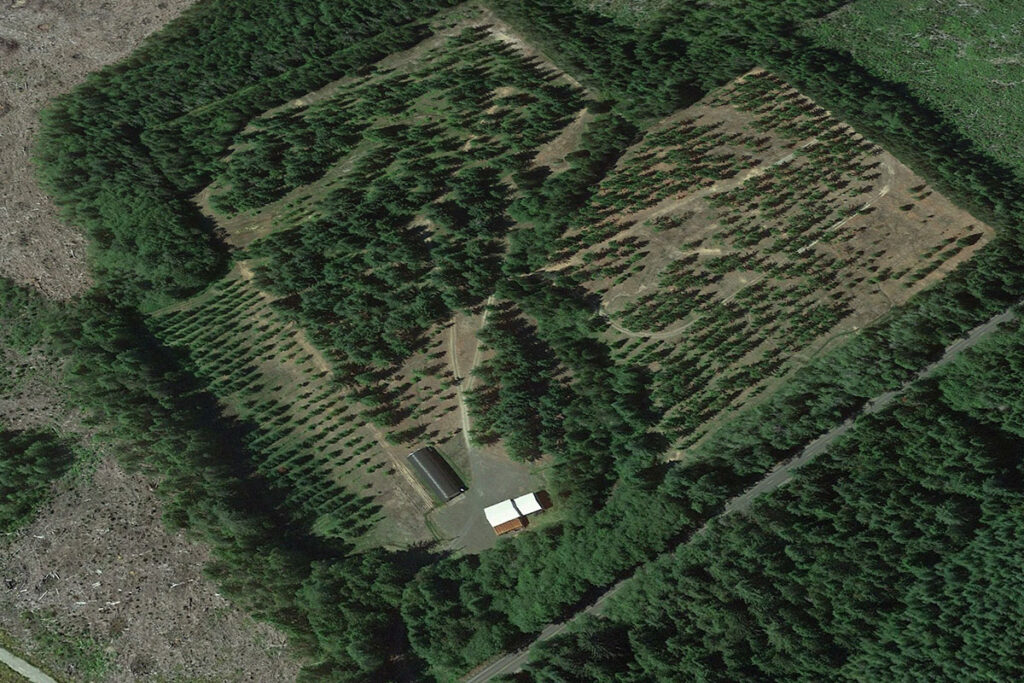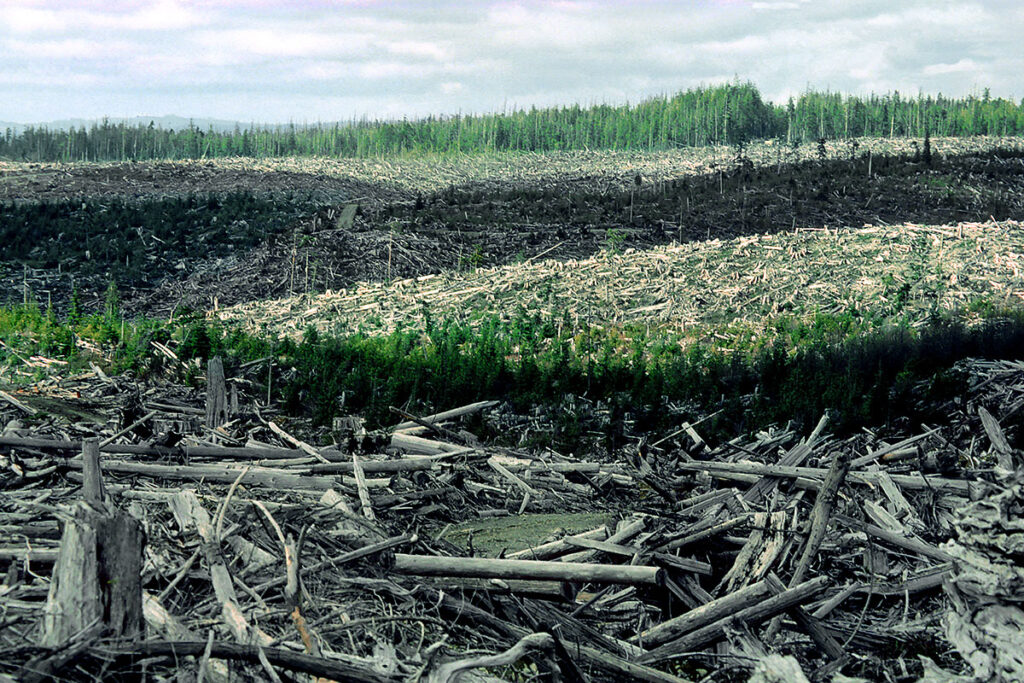
The Quinault Indian Reservation covers more than 200,000 acres on Washington’s Olympic Peninsula in some of the best timber land in the world. And yet, by the 1970s, after more than a half-century of timber harvests overseen by the U.S. Bureau of Indian Affairs, very little timber was growing on large portions of the tribal land.
Today, the forestland looks much different. Second-growth forests are returning. Riparian zones and other sensitive areas are protected. And a tribe-approved forest management plan now ensures that the reservation’s forests are managed more holistically, balancing revenue generation for all reservation landowners with long-term conservation. The story of how this change occurred offers a lesson in the power of local control, incentives, and accountability to improve the stewardship of natural resources for both conservation and sustainable timber production.
For decades, the Bureau of Indian Affairs’ forestry guidelines, written in Washington D.C., focused on maximizing timber production—but with little regard for the long-term sustainability of the forest and revenues from it. A history of the Quinault Indians noted that in the early part of the 20th century, the bureau had “decreed that its agents did not need to practice sustained yield, i.e. remove slash and encourage a second growth” on much of the reservation because it would be expensive; natural regrowth and decay would be adequate. “When the BIA was largely employing non-Indians from the East Coast,” President of the Intertribal Timber Council Cody Desautel explains, “they were focused on timber production.” Future regeneration and non-harvest values were not part of the equation.
The mismanagement of the forests basically spurred self-governance. Qinault was one of the first.
As a result, the BIA’s federal managers left large amounts of timber slash on the ground after a harvest, leaving little space for natural regrowth. Additionally, western redcedar, once the predominant species in the reservation’s forests, contains a chemical that inhibits decay of the wood. So rather than decomposing, the slash choked out potential regrowth. While the problem was apparent to those who lived and worked on the reservation, the BIA’s guidelines didn’t consider these unique circumstances, and agency administrators had little incentive to modify the rules.
Frustrated by the bureau’s economic and environmental management of Quinault forests, the tribe initiated a process that, decades later, put them in control of their own forest stewardship. “The mismanagement of the forests basically spurred self-governance,” says James Plampin, a forester for the Quinault Indian Nation. “Quinault was one of the first.”
The process of transferring responsibility for forestry on the reservation started with the tribe requesting changes in how the bureau managed the forests. As late as the 1970s, the BIA did not even know how much timber there was on the reservation. The last inventory had been completed between 1915 and 1917. Additionally, while the BIA provided basic guidelines, it didn’t have a detailed forest management plan.
In 1976, the tribe began addressing these shortcomings when Congress allocated funding to create a pilot Quinault tribal forestry program. Initially, the program worked alongside the BIA, focusing on activities the bureau had neglected. One of the first priorities was to clear the heavy slash to allow for replanting. The tribe began a program to salvage down wood and use controlled burns to clear the land. The tribe had also started a seed orchard in 1977 to provide healthy, local stock to use in replanting.

Over the years, the Quinault used revenue from harvests on tribally owned land to increase tribal ownership of land within the reservation. The tribe currently owns slightly less than half of reservation land. The remainder of the land is split between private ownership and “allottees,” members of Quinault Indian Nation and other tribes who own land on the reservation.
The tribe also wrote forest management plans and created forest practice rules, best management practices, and a sustainable harvest plan. It also developed a robust program of commercial timber harvest. And in 2016, the tribe took responsibility from the BIA for all harvests on reservation trust lands. The difference in incentives and accountability was pronounced.
“We are modeled like private industry where we are doing very active forestry,” says Plampin. “We have our [best management practices]. We are protecting streams. We are protecting water quality. We reforest after harvesting.”
The tribe’s 10-year forest management plan guides its harvest activity. The existing plan expires in 2027, and the tribe is updating the rules based on feedback from reservation residents. “The next two years we will poll the business committee and the allottees for any issues or concerns,” Plampin adds. “Are we protecting fish? Are we protecting enough?”
Many factors contributed to the change in forest practices during the half-century since the tribe launched its forestry program. Forestry science has certainly improved. There has also been a broader societal change in the type of forest management supported by the public.

The most meaningful change, however, was placing more control and accountability in the hands of the tribe. Local foresters who knew the ground and were accountable to the tribal government and landowners played a leading role in changing how reservation forests were managed.
Compared to far-off bureaucrats who lack deep ties to the reservation, tribal authorities are more likely to reflect the priorities of tribal members and adjust to changing information. The BIA’s goals for forest management were very different from those of the Quinault tribal government and other landowners. In addition to generating revenue from timber harvests, the Quinault forest management plan aims to “conserve or improve habitat for fish and wildlife,” and promote “cultural values by providing access to and conservation of traditionally used forest resources and land.”
The bureau had not required its foresters to complete environmental assessments before each timber harvest. However, when the tribe took responsibility from the BIA, the agency immediately required the tribe to complete an assessment before the agency approved timber harvests. As annoying as that double standard was to the tribe, it demonstrates the role that institutional arrangements play in how natural resources are managed. When the bureau was responsible for the costs of complying with the environmental assessments, they weren’t a priority. Once those responsibilities were shifted to the tribe, bureau staff decided they were necessary.
To the ecologist, it is a laboratory; to the conservationist, a priceless treasure; to the timberman, a waste; to the hiker, a test; to the logger, a challenge; to the camper, the prototypical soother; and to the sports fisher, unrivaled catches. To the Indian people it is all these things and more: it is a reminder of what their ancestors knew.
Research worldwide suggests that the Quinault’s experience of benefiting from local governance is not unique. A recent review of 169 studies on conservation governance found that local decision making, often by Indigenous populations, was more likely to achieve the goals of conservation projects. The authors wrote that “most studies presenting positive outcomes for both well-being and conservation come from cases where Indigenous peoples and local communities play a central role.” In contrast, projects controlled by outside organizations that attempt to override customary practices “tend to result in relatively ineffective conservation at the same time as producing negative social outcomes,” they noted.
That process is clear on the Quinault reservation. Including input and knowledge of tribal foresters not only reduced the conflict between the BIA and tribal members, but it also put reservation forests on a path to generate sustainable revenue and increase non-timber values.
As Quinault historian Pauline Capoeman put it in her history of the tribe, the reservation’s forests embody a wide range of values. “To the ecologist, it is a laboratory; to the conservationist, a priceless treasure; to the timberman, a waste; to the hiker, a test; to the logger, a challenge; to the camper, the prototypical soother; and to the sports fisher, unrivaled catches. To the Indian people it is all these things and more: it is a reminder of what their ancestors knew.”
Balancing those values will always be a challenge. But working with residents, foresters, tribal government, natural resources staff, and other stakeholders, the Quinault Indian Nation is well-positioned to sustainably manage its forests, ensuring both economic and cultural benefits for future generations.




